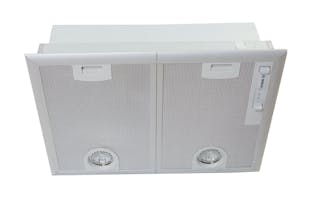Rangehoods
Find the best rangehood for your home with our buying guide and test results for 53 new and 48 discontinued models.
Lifetime score
Our overall score combines test performance (how well the appliance works) with predicted reliability (how likely models from the brand are to remain free of faults) and owner satisfaction (how likely owners of the brand are to be very satisfied).
 We’ll only recommend appliances you’ll love to own, that work well and keep working well for a long time.
We’ll only recommend appliances you’ll love to own, that work well and keep working well for a long time.
Test performance
It’s no good if a product lasts for several decades if it doesn’t work well in the first place. A disappointing product will soon become unloved and unwanted. For this reason, our independent lab testing still forms an important part of our overall lifetime score.
Our rangehoods test includes:
Performance
Rates steam extraction from 2 and from 4 simmering saucepans on both high and low fan speeds.
Noise
Measured 50cm from the front edge of the hood.
Ease of use
Covers filter cleaning, controls and lighting over cooking area.
Mode
We test models in both ducted and recirculating modes, and publish separate results for each.
Predicted reliability
It’s reasonable to expect a new appliance to remain fault-free for at least the first five years. Our predicted reliability won’t tell you whether the rangehood in your kitchen will stop extracting tomorrow, but it does show which brands make models that are less likely to fail.
Owner satisfaction
Satisfaction is important – no appliance should be a source of buyer-regret. Appliances with very satisfied owners are more likely to get cleaned regularly and maintained well. Their owners are more likely to seek repair for faults than look for a quick replacement.
Repairability (coming soon)
Older appliances are more likely to go wrong, but common faults should be repairable. Repairs should be affordable and convenient – parts need to be easy to find at a reasonable cost, instructions should be available, and repair shouldn’t need hours of expert labour.
We haven’t been able to assess repairability yet, but it’s important, so we’re gathering data and forming a plan so we can start including it in our lifetime scores. It will be challenging. We’ll need to analyse product failure data in our reliability surveys, conduct hands-on inspections to evaluate how easy products are to take apart, and investigate which brands make spare parts available at a reasonable price.
About our test
We’re reporting on 60cm and 90cm wall canopy models, undermount or integrated models, and retracting or slide-out rangehoods. We also now test downdraft extractors.
All were tested in the same lab using the same test method – so the results can be compared across all models.
To make things fair, the 60cm models were tested over a 60cm cooktop and the 90cm models over a 90cm cooktop. On average, the wider 90cm rangehoods were more effective than the 60cm hoods. If you have the space, think about installing a 90cm model – even if your stovetop is the narrower 60cm width.
We tested all the rangehoods so they ducted outside, and if applicable in recirculating mode. In ducted mode, the steam (which can be greasy from frying) and smells are blown outside. In recirculating mode, air is passed through carbon or charcoal filters and recirculated back into the kitchen. This eliminates cooking odours and grease, but not moisture – which goes back into your kitchen. Installing in recirculating mode is a second-best option.
In each mode we tested how well they removed steam from the room – first with 2 saucepans of simmering water and then with 4. We tested their performance with the fan on high and on low.
We also measured noise levels with the fan on high and on low. Next we checked how easy it was to get at and clean the mesh filter, replace a carbon or charcoal filter (only applicable for recirculating mode), use the controls and clean the exterior surfaces. Finally, we assessed how well each rangehood lit the stovetop.
Our testing shows ducted rangehoods perform better and we only recommend rangehoods that meet our criteria in ducted mode. Always install them to be ducted if you can.
Survey data 101
In our annual reliability and satisfaction survey, consumers tell us about faults that have left an appliance they own unusable or mean they’ve had to change how they use it. We also ask them how satisfied they are with the appliance. We use their data to produce our predicted reliability and owner satisfaction scores.
We use a statistical test to rate the relative performance of each brand. Compared to data we have for all products (of the same type) in the survey, we rate each brand with highest, high, average, low or lowest reliability and satisfaction. You can compare the rating of different brands for the same product type (for example, the reliability rating for Miele and Haier washing machines), but you can’t compare the results for different product types (for example, satisfaction of LG TVs and Samsung phones).
We analyse brands that get at least 30 responses in our survey. That means there are some brands we can’t analyse because we don’t have enough data. For those brands, we assume they have average predicted reliability and owner satisfaction.
Our data is based on responses for 1285 rangehoods in our 2022 survey.
We've tested 101 rangehoods.
Find the right one for you.
Beko
.jpg&w=315&q=75)
Bosch

Bosch
